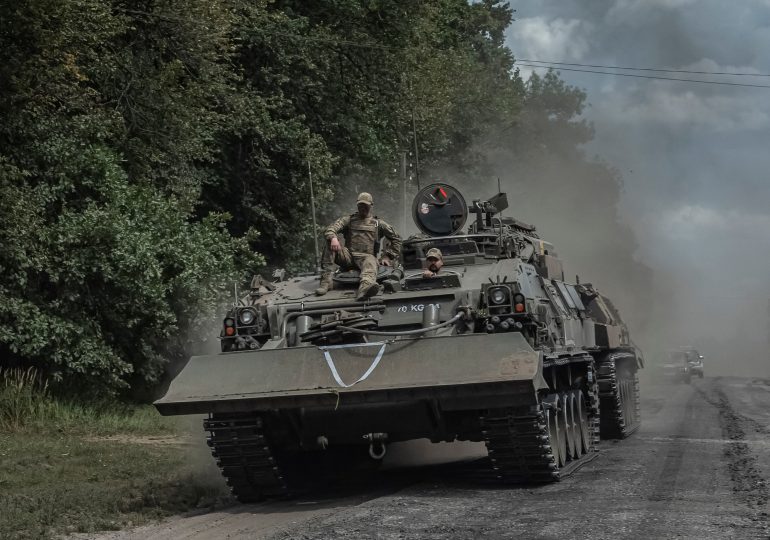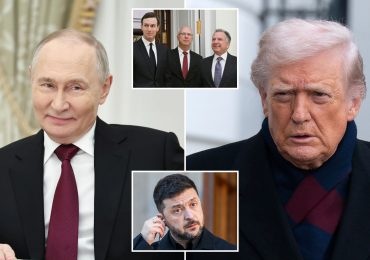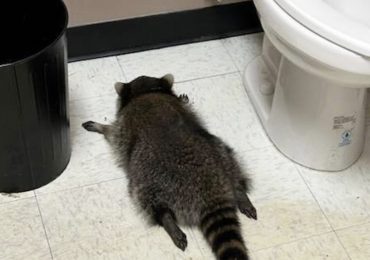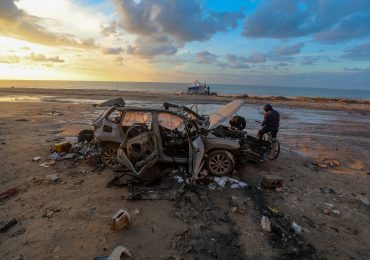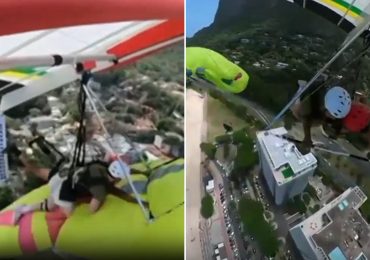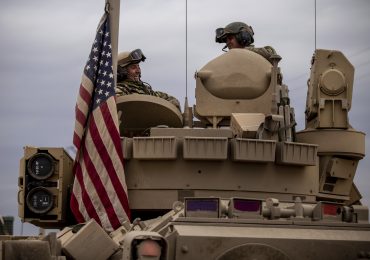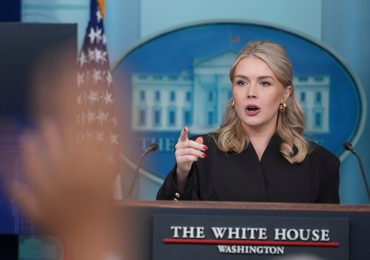UKRAINE’S daring invasion into Russia has been launched for two key reasons – with one aimed at Putin and one at the West.
Some 10,000 Ukrainian troops supported by tanks and aircraft have now pushed nearly 20 miles in Russia – attacking the regions of Kursk and Belgorod.
Ukrainian troops in the Sumy region, near the border with Russia
ReutersTanks & trucks taking part in the invasion are daubed with a ‘White Triangle’[/caption]
ReutersUkraine have pushed nearly 20 miles into Russia[/caption]
ReutersUkrainian troops pose with a humvee[/caption]
AFPThe white triangle symbol on a Ukrainian armoured vehicle heading into Russia[/caption]
Fighting vehicles daubed with a “White Triangle” symbol have been seen rolling across the border – an echo of when Putin’s forces invaded in the other direction with tanks daubed with a white “Z”.
It is the first time Russia has been invaded since World War 2 and the first time anyone has invaded a nuclear-armed state.
But Ukrainian officials have now revealed the key reason for their crafty plan – to try and stretch Putin’s already creaking army to breaking point.
Dozens of armoured vehicles ploughed through the Ukrainian city of Sumy painted with white triangles as they headed for Russia.
After pushing into Kursk in the largest cross-border operation of the war so far, Russia was forced to admit Ukraine had penetrated as deeply as 18 miles.
Tens of thousands have fled the borderlands as Russia was forced to order more evacuations today amid the unprecedented move on its territory.
A high-ranking Ukrainian official told AFP that the idea behind the attack is to stretch Putin’s armies as much as possible, spreading them thinly over different areas.
The security brass told AFP on condition of anonymity that “the aim is to stretch the positions of the enemy, to inflict maximum losses and to destabilise the situation in Russia as they are unable to protect their own border”.
He also revealed how Russian claims that Kyiv had deployed 1,000 troops were a serious underestimate.
“It is a lot more,” he said. “Thousands.”
As well as acting as a huge morale-boosting win for Ukraine – the invasion also has a second key purpose in Kyiv’s masterplan.
It is a message to allies in the West who have closely monitored Putin’s war.
Military analyst Franz-Stefan Gady told The Washington Post: “This is definitely one consideration that it is really a signal to the West and to Ukrainian allies and partners that Ukraine is still capable of launching offensive operations.
Ukraine is showing the world that the country is able to fight back
Diplomat
“That Ukraine is capable of conducting fairly complex operations into enemy territory.”
And an anonymous Western diplomat working in Kyiv gave the same analysis.
“Ukraine is showing the world that the country is able to fight back,” they said.
“This operation is perfect timing before the U.S. election to put this conflict back on the map.”
The ambush could involve as many as 10,000 troops made up of five 2,000-person brigades alongside a 400-person battalion, Forbes reports.
Ukraine’s soldiers are even digging trenches along the new frontline, apparently cementing plans to attempt a long-term occupation in Kursk.
The American election in November is sure to impact aid to Ukraine – as Republican candidate Donald Trump has previously slammed the amount of money and weapons being sent to Kyiv’s forces.
If the Democrats win Vice President Kamala Harris will be calling the shots instead of incumbent Biden, meaning current US policy on Ukraine is likely to shift either way.
The Kursk invasion is the most significant attack by a foreign army on Russia since World War Two.
Designed to destabilise Russia after months of its creeping advances over the front line, Ukraine managed to catch the Kremlin off guard.
Russian forces rushed to reserve troops, tanks, aviation, artillery and drones for the borderlands in a bid to quash Ukraine’s success there.
East2WestFire burns at Zaporizhzhia nuclear power plant, Europe’s largest nuclear facility, on August 11[/caption]
Satellite images show the trenches being built in the Kursk region
Russian soldiers surrendering their territory
But despite their desperate efforts, they conceded on Sunday that Ukraine was able to reach as far as 18 miles in some areas.
Russia’s defence ministry in a briefing admitted some of Kyiv’s tanks had pushed their way towards the villages of Tolpino and Obshchy Kolodez.
And on Monday, Russia ordered fresh evacuations as Ukraine appeared to be moving in on another nearby region – Belgorod.
“The enemy is active on the border of the Krasnoyaruzhsky district”, Belgorod Governor Vyacheslav Gladkov wrote on Telegram.
“For the health and security of our population, we’re beginning to move people who live in Krasnoyaruzhsky to safer places”.
It comes after a fire was sparked at Europe’s largest nuclear power plant, Zaporizhzhia, on Sunday night.
Dramatic footage showed plumes of black smoke pouring from the cooling towers.
Russia seized the plant in March 2022 after sending tanks and troops with RPGs to take the sensitive area.
Putin’s installed regional governor of Zaporizhzhia, Yevgeny Balitsky, said the fire had been caused by a Ukrainian shelling.
But Kyiv quickly hit back, with one commander saying that Russian forces had deliberately set fire to “a large number of automobile tires in cooling towers,” the Kyiv Independent reported.
And Ukraine’s president Zelensky said Russia was using the plant to blackmail the world.
He insisted: “Currently, radiation levels are within norm.
“However, as long as the Russian terrorists maintain control over the nuclear plant, the situation is not and cannot be normal.”
The UN’s nuclear watchdog said there was no sign of a nuclear leak.
Russia first invaded Ukraine in February 2022 and has waged an unrelenting campaign ever since, subjecting civilians and soldiers to daily missile and drone attacks.
Despite re-capturing large areas in 2022, Kyiv has mostly been on the back foot throughout the war, struggling with kit, manpower and arms supplies.
Diggers working on trenches in the Russian territory
ReutersUkrainian servicemen ride a tank near the border, August 10[/caption]
Leave a comment
